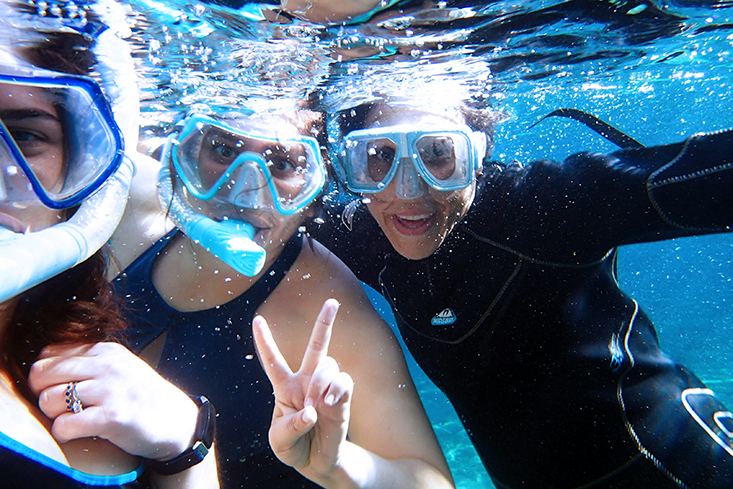Written by: Makenzie Kerr, Lab Manager & Outreach Coordinator
Viruses are a hot topic. We hear about them daily. While the viruses that dominate the news cause disease, this is not always the case. Some viruses survive in living things without doing any harm. Some can even help the host organism! There are so many different types of viruses in the world, yet we know so little about them. Dr. Mya Breitbart’s lab at the University of South Florida College of Marine Science is working on that very problem, figuring out which viruses are in aquatic habitats and what they are doing there.
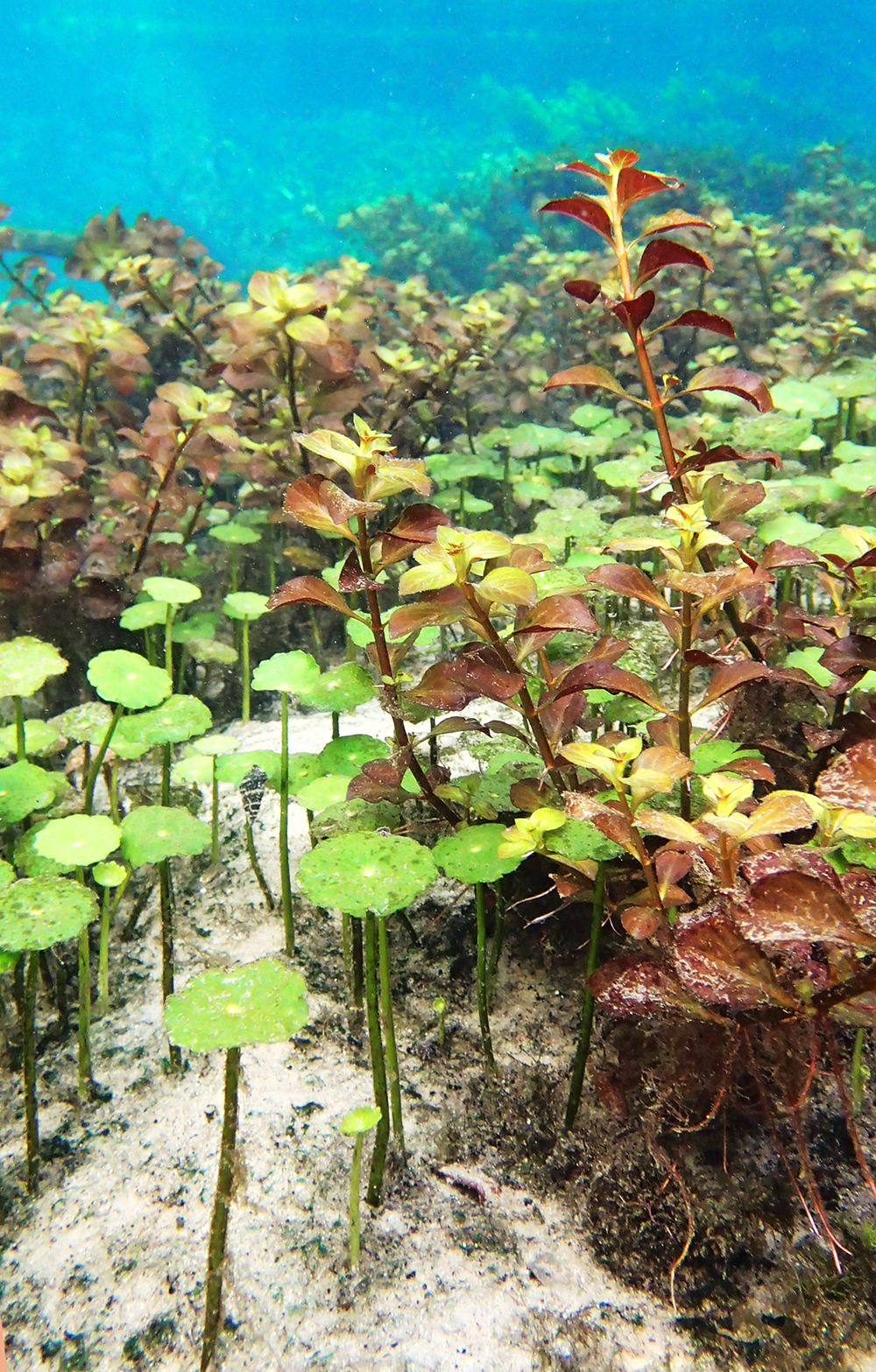
Aquatic Macrophytes in Ichetucknee Springs. Photo by Makenzie Kerr.
Recently, the focus has been on viruses in macrophytes, a diverse group of photosynthetic plant-like organisms that are visible with the naked eye, in Florida’s beautiful freshwater springs. Macrophytes include seagrasses, mosses, macroalgae, liverworts, and more. These organisms help keep our springs crystal clear, provide food for manatees and other animals, and help with nutrient and carbon cycling in these unique environments.
There are some viruses that have long been known to cause disease in crops and other land plants, so a great deal of energy (and money) goes into monitoring them. However, many viruses also infect land plants without causing harmful symptoms and some have even been shown to be advantageous. For example, some viruses enhance a plant’s tolerance to drought! Unlike land systems, almost nothing is known about viruses in aquatic plants.
Lead researcher Dr. Karyna Rosario explains: “It’s mind blowing that the study of viruses began with the discovery of a plant virus, tobacco mosaic virus. Yet, after a century of virological research on terrestrial plants, we have not paid attention to viruses infecting aquatic plants. We might not eat most of these plants, but they are essential for the health of marine and freshwater systems.”
This is a big research gap, and the Breitbart lab does not shy away from this work! In fact, we love collecting samples in the chilly Florida springs. As the lab manager, I help to coordinate sample collections and processing.
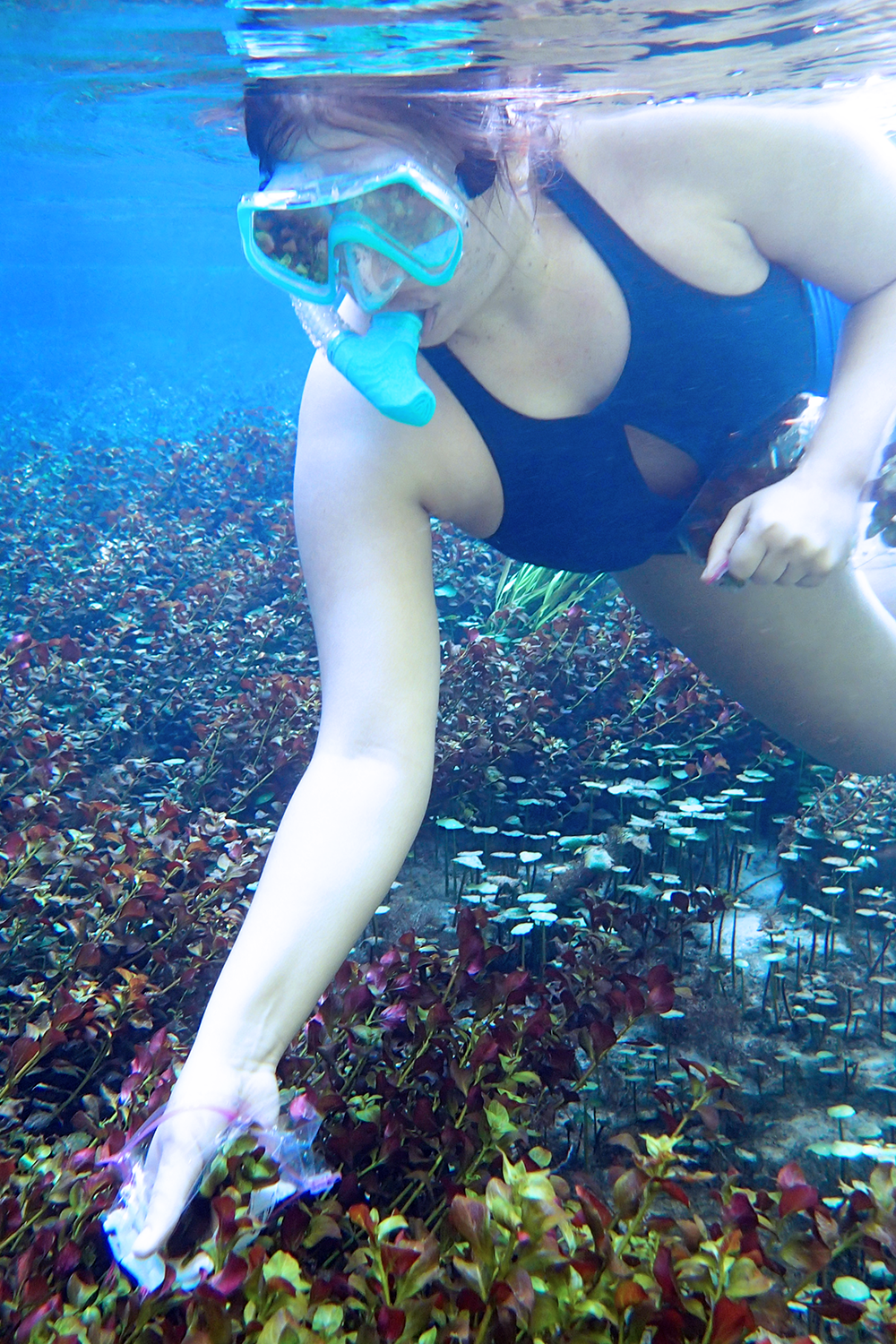
Natalie Sawaya collecting macrophytes using the “poop bag method” to remove plants without touching them. Photo by Makenzie Kerr.
Our lab’s latest paper, published in PeerJ, was the first study to sequence viruses from freshwater macrophytes. The study allowed us to look at the different groups of viruses associated with these aquatic plants and compare them to viruses found in other environments.
“This is the first step to start learning how viruses affect macrophytes. Now that we know who is there, we can start targeting specific groups of viruses to learn how they may impact macrophyte ecology,” said Rosario.
Even though all macrophytes collected looked perfectly healthy with no signs of disease, we discovered over 150 viral sequences, including the complete genetic sequence of 37 novel viruses! Interestingly, all major groups of known RNA viruses were identified, indicating that macrophytes harbor an incredible viral diversity. Identified viruses most similar to known plant viruses indicate that viruses causing persistent infections may be widespread in macrophytes. Viruses with persistent lifestyles establish chronic infections that may last for the plant’s lifespan and do not cause visible disease. The study also found viruses that likely infect invertebrates, like water bugs and snails, that live on and around the aquatic plants.
One of the biggest surprises was the detection of two viruses known to infect land plants, namely potato virus Y and oat blue dwarf virus, in the freshwater macrophytes. While these viruses need to be further investigated, the presence of the same viruses in land and aquatic plants suggests there is a virus continuum connecting the two environments. Viruses could be spread from land to water plants or vice versa.
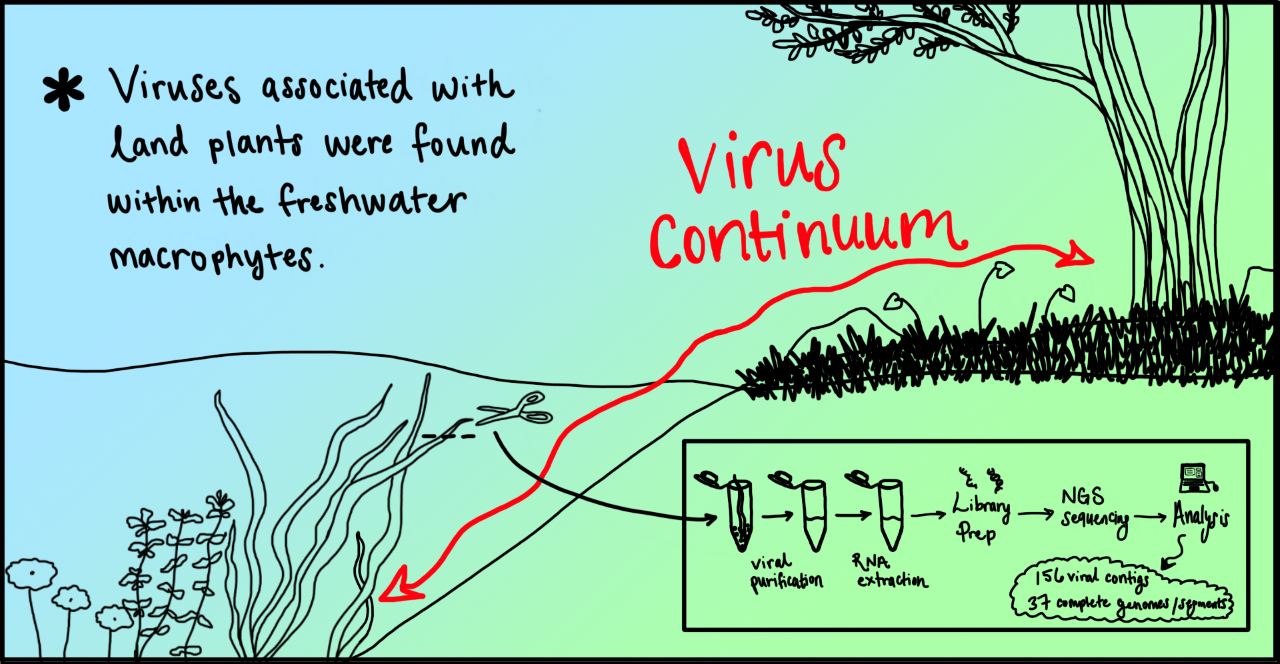
Virus continuum figure. Figure by Makenzie Kerr.
Unlike land systems where vascular plants, like ferns and trees, are responsible for most of the photosynthesis and oxygen production, macrophytes, like mosses and macroalgae, are the dominant photosynthetic organisms in the freshwater springs. Discovering viruses in these local macrophytes is just the first step, raising many more questions: Do these viruses affect their hosts in a positive or negative way? How might those relationships be altered with future environmental changes? Are the springs’ viruses found in other freshwater systems? How do the viruses spread underwater? Could some of these viruses be used for biocontrol of nuisance algae species?
The findings from this paper have made our lab even more excited to explore the virus ecology within Florida’s aquatic macrophytes. If you are interested in learning more about this research, stay tuned! Dr. Breitbart and Dr. Rosario just received a National Science Foundation grant to work on virus ecology of seagrasses in Tampa Bay, Florida. We are excited to get back out sampling!
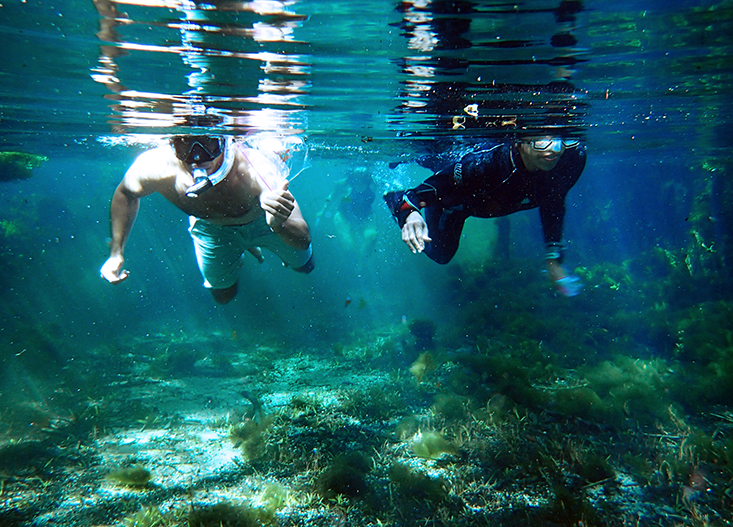
Keith Keel & Karyna Rosario swimming. Photo by Makenzie Kerr.
In the meantime, if you want to explore aquatic viruses, we encourage you to try our Virus Hunters activity. This interactive online activity was made for the St. Petersburg Science Festival last year. All ages are welcome to play! There are easy (elementary-middle school ages) and hard versions (high school age-adults) available.
